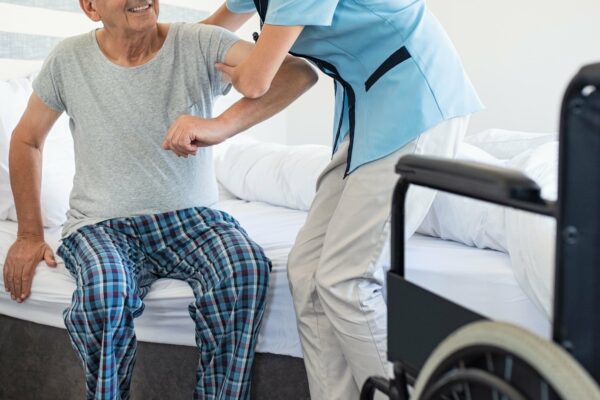Introduction
Navigating the world of toddlerhood can seem like embarking on a wild experience loaded with excitement and changability. As moms and dads and caregivers, we usually discover ourselves in situations where minor crashes can rapidly rise. As a result, recognizing Toddler Emergency treatment Essentials: Planning For Typical Childhood Injuries is not simply useful; it's crucial for guaranteeing the security and wellness of our little ones. In this thorough guide, we'll delve into various facets of emergency treatment especially tailored for kids, covering every little thing from choking avoidance to recognizing asthma symptoms.
Understanding Kid First Aid Essentials
When taking into consideration emergency treatment for kids, it's essential to have a comprehensive grounding alike childhood years injuries and emergencies. Young children are naturally curious and energetic, making them vulnerable to crashes such as falls, cuts, burns, and allergic reactions. By being aggressive and ready, you can substantially alleviate these risks.

HLTAID012 Accreditation Australia
The HLTAID012 certification offers people with the skills required to supply first aid in instructional settings. This credentials is specifically appropriate for child care workers, educators, and moms and dads who want to construct their self-confidence in handling events properly.
Why Seek HLTAID012 Certification?
- Comprehensive Training: Covers standard life assistance techniques. Emergency Readiness: Instructs how to respond to various emergencies. Child-Specific Emphasis: Customized material concerning child-specific issues.
Choking Prevention Strategies
Choking is among one of the most common emergency situations that can occur with kids. Comprehending how to stop choking is crucial for all caregivers.
Common Choking Hazards
- Small toys Hard candies Grapes Nuts
Effective Preventative Measures
Always monitor young children throughout meals. Cut foods into tiny pieces. Educate older siblings regarding risk-free play practices.Epipen Management: A Lifesaving Skill
For children with well-known allergies, having an Epipen handy can imply the difference in between life and death.
How to Provide an Epipen
Remove the safety cap. Hold the pen versus the external thigh. Press strongly until you listen to a click. Hold in position for 10 secs before removing.Managing Minor Wounds: Finest Practices
Toddlers are energetic explorers; therefore minor wounds are inevitable.

Steps to Take care of Cuts and Scrapes
Clean the injury with soap and water. Apply a disinfectant wipe or cream. Cover with a clean and sterile bandage.Proper Hand Hygiene in the house and School
Hand hygiene is critical in preventing infections amongst toddlers.
Key Practices for Effective Hand Hygiene
- Teach children correct handwashing techniques. Use alcohol-based sanitizers when soap isn't available. Encourage normal handwashing before dishes and after using the restroom.
Child Defibrillation Advice: What Caregivers Should Know
Understanding exactly how to make use of a defibrillator could save a youngster's life during heart emergencies.
Steps to Use an AED (Automated External Defibrillator)
Turn on the AED. Expose the youngster's upper body and use pads. Follow voice prompts offered by the device.Building Instructor Self-confidence through Educating Programs
Training programs cyber aid instruction geared towards educators enhance their confidence in taking care of health-related incidents efficiently within childcare settings.
Components of Effective Training Programs
- Hands-on method sessions Written assessments Regular updates on finest practices
Recognizing Bronchial asthma Signs Early On
Asthma can show up suddenly in children; identifying signs early can cause timely intervention.
Common Signs of Bronchial asthma in Toddlers
- Wheezing or coughing Shortness of breath Chest tightness
Playground Problems: Avoidance & Feedback Guide
Playgrounds can be a resource of fun however also prospective hazards if not sufficiently supervised or maintained.
Preventing Play area Injuries
Ensure devices satisfies safety and security standards. Regularly look for risks like rust or loosened parts.Responding to Play area Injuries Effectively
Stay calm and assure your child after an injury occurs. Assess the injury seriousness before looking for clinical attention if necessary.Childproofing Strategies Every Parent Should Implement
Creating a secure setting entails childproofing your home effectively.
Essential Childproofing Practices Include:
- Installing safety and security entrances at stairs Securing hefty furnishings to walls Using electrical outlet covers
Incident Coverage Protocols: Value & Procedures
Documentation is key when handling cases including youngsters in care settings.
Steps for Occurrence Coverage:
Record specifics concerning what occurred instantly after an incident. Notify moms and dads quickly concerning any injuries sustained by their child.Immediate Feedback Obligations Throughout Emergencies
Knowing your responsibilities during emergencies assists make certain timely activity is taken when required most.
Responsibilities Include:
Assessing the situation smoothly without panic. Providing prompt emergency treatment as essential while awaiting professional help if required.Written vs Practical Elements of Emergency Treatment Training
First aid training commonly includes both written material and practical components which enhance each various other well.
Importance of Both Components:
- Written content gives fundamental understanding, Practical workouts aid enhance skills found out in theory,
Renewal Timelines: Remaining Updated on First Aid Skills
Staying existing with first aid skills ensures you're prepared when emergency situations arise.
Recommended Revival Timelines:
HLTAID012 accreditation must be restored every 3 years. Workshops might be held each year for ability refresher courses between qualification renewals.FAQs regarding Toddler Emergency treatment Essentials
What should I include in my childcare centre first aid kit?
A comprehensive child care centre first aid kit must include adhesive tapes, antibacterial wipes, gauze pads, scissors, adhesive tape, tweezers, immediate cold packs, gloves, burn cream, emergency situation get in touch with numbers, CPR instructions specifically tailored for aid providing infants/toddlers like Infant CPR Australia standards, etc.
How do I acknowledge bronchial asthma signs and symptoms in my toddler?
Usual indications include consistent coughing (especially in the evening), hissing audios while taking a breath out, shortness of breath throughout physical activity or exertion, fast breathing patterns that appear unusual compared to typical actions ought to trigger instant evaluation by medical care professionals making certain swift interventions take place if necessary!
What are common childcare staff emergency treatment requirements in Australia?
In Australia's child care market-- personnel have to hold certifications like HLTAID012 qualification reflecting competencies around giving emergency help across different situations consisting of choking avoidance strategies along with comprehending event coverage protocols making certain compliance within regulations regulating child care safety and security hazards Australia-wide!
Can I provide standard emergency treatment without previous training?
While several standard reactions might come naturally-- it's highly a good idea getting formal training using legitimate training courses such as those using HLTAID012 qualification Australia due to the fact that having structured expertise boosts your confidence dramatically throughout real-life circumstances where every second counts!
What's involved in kid first aid fundamentals training programs?
Educating programs include both academic expertise (created elements) along with sensible applications allowing participants hands-on experience imitating real-world circumstances-- this double approach facilitates far better retention rates making sure caretakers feel equipped tackling numerous challenges they could run into daily!
How commonly needs to I restore my young child emergency treatment training?
It's suggested restoring qualifications every three years offering refresher courses/check-ins periodically throughout that time structure allows individuals stay updated accessing current improvements related best techniques enhancing total effectiveness responding confidently whenever circumstances occur!
Conclusion
In conclusion, understanding Toddler Emergency treatment Basics: Getting Ready For Usual Childhood years Injuries incorporates greater than simply memorizing procedures; it calls for hands-on technique coupled with theoretical knowledge that encourages caregivers effectively take care of unanticipated circumstances calling for immediate attention! By equipping on your own with necessary abilities-- you're not simply preparing on your own yet likewise cultivating a more secure environment aiding youngsters's growth exploration experiences! Remember-- the right prep work today leads towards healthier tomorrows filled up pleasure laughter rather than fret fear when dealt with unanticipated obstacles emerging suddenly along their journey!